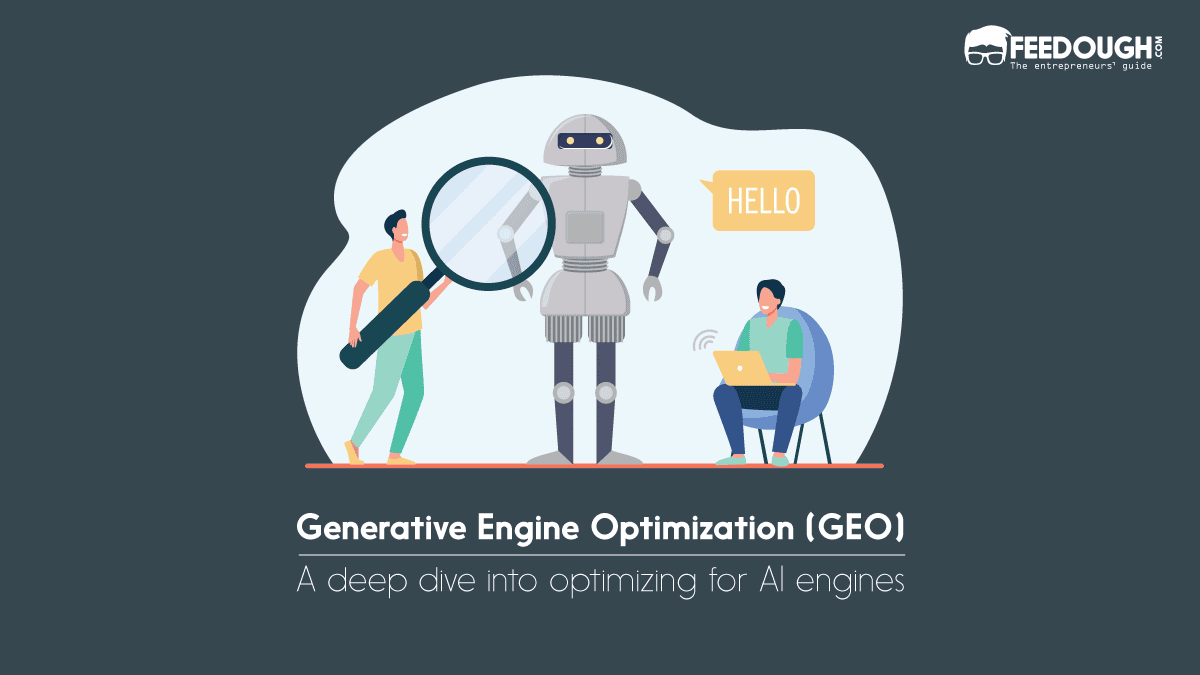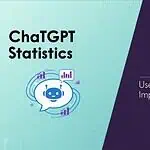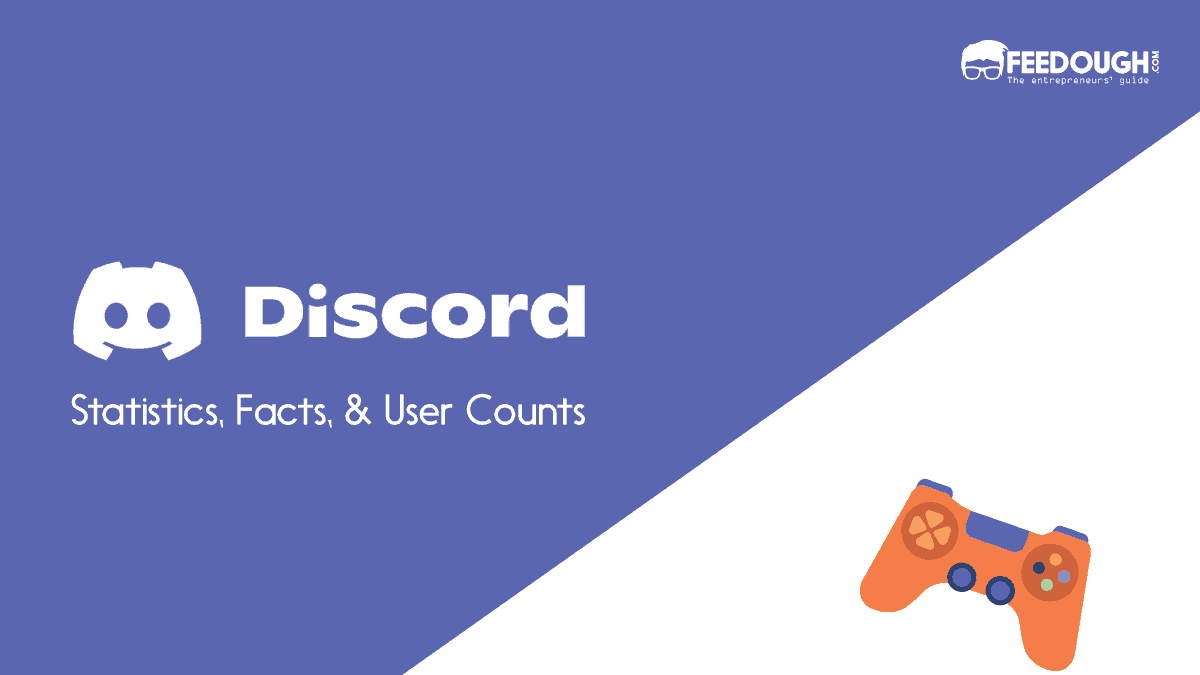If you’d asked me about artificial intelligence back in, say, 2015, I would have probably shrugged.
It felt like science fiction, something for movies.
Not real life, you know? But then, things changed.
Fast. Really fast.
Now, in 2025, AI has changed the way we understand and use the internet.
I mean, according to stats, the journey doesn’t start with Google alone. Think about it, people are turning to platforms like ChatGPT and Perplexity for their discovery needs. According to statistics, ChatGPT alone gets over 5 billion visits monthly, making it the fifth most visited website globally.
People have already started using ChatGPT for their information needs, and this shift is slowly moving towards commercial needs too.
This shift means people are looking for quick, curated answers, not just lists of websites. Think about it, AI chatbots saw a huge jump in traffic, nearly 81% between April 2024 and March 2025, adding up to billions of visits. Meanwhile, traditional search engine traffic actually dipped slightly in the same period by 0.51%.
So, yep, when most of your potential clients are now starting their online journey with an AI, what does that mean for your business? It means your old SEO playbook needs a serious rewrite.
This is where GEO or Generative Engine Optimization comes into play.
What Is GEO?
GEO, or Generative Engine Optimization, is all about making sure your business shows up when people ask AI tools questions. This practice involves optimizing your content so it is found and utilized by AI models, like ChatGPT, Claude, Gemini, and Google’s AI Overviews, when they generate responses to user queries. Essentially, it’s about making your digital content visible and relevant to these new generative interfaces.
Think of it this way, traditional SEO focused on getting your website to rank high on a list of search results. GEO, on the other hand, aims for your information to be directly included in the AI’s answer, not just linked to. It’s a shift from “showing up in results” to “being the answer.”
Think of it this way, AI models are like super-smart students who read tons of books, or in this case, a vast amount of online content. When someone asks them a question, they don’t just point to a book; they give you a summary, pulling information from various sources. GEO aims to make your content one of those key sources they pull from. It’s about making your digital information easy for AI to find, understand, and use.
GEO Vs SEO
While many argue that GEO is just an extension of SEO, it has its own unique considerations. SEO focuses on ranking websites in search engine results pages. You know, those blue links we’ve all grown accustomed to clicking. You want your website to be on that first page, ideally in the top spot. It’s about keywords, backlinks, and technical stuff to make sure Google, or Bing, or Yahoo, sees your site as the most relevant.
GEO, however, is a different beast. It’s not about getting clicks to your website. It’s about getting your actual content, your facts, your insights, into the AI’s direct answer.
Let’s take two examples. First where you have an ‘informative’ intent and want to know about how to brew coffee.
Traditionally, with SEO, you’d type “how to brew coffee” into Google. Then, you’d get a list of websites, maybe a YouTube video or two. You’d click on a link, read an article, and learn how. Your goal was to find a good article, and the search engine’s goal was to show you good articles.
With GEO, you’d ask an AI, like ChatGPT, “How do I brew a perfect cup of coffee?” The AI wouldn’t give you a list of links. It would just tell you, directly, the steps. “First, grind your beans fresh. Use filtered water. Heat the water to 200 degrees Fahrenheit,” and so on. Your goal is still to get good information, but the AI’s goal is to give you the answer directly, without you needing to click anywhere else.
The problem?
The publishers who originally wrote the content the AI used don’t get the website traffic they used to. They don’t get those clicks. And if they don’t get clicks, they don’t get ad revenue. This is a big problem for their business model. And there’s nothing they can do about it, either, unless they adapt to this new landscape.
Now, consider a different scenario, one with a ‘commercial’ intent. Let’s say you’re looking for a new coffee maker under $100.
Now, with SEO, you’d search “best coffee maker under $100.” You’d see review sites, maybe some online stores. You’d click on a link, read comparisons, and then decide where to buy. The website traffic would flow to these review sites and retailers.
With GEO, you’d ask an AI, “What’s a good coffee maker under $100?” The AI might just tell you, “The XYZ Coffee Maker is a popular choice, known for its durability and ease of use. It’s often found for around $75.” It could even tell you where to buy it, like “You can find it on Amazon or at your local electronics store.”
But in this second case, there are clicks available. The AI will often provide links to purchase these items. Why the difference, you ask? Simple, for commercial queries, the AI models have learned that users still want to complete a transaction. They want to buy something. And to buy something, you need a link to a store. This is a crucial distinction.
This is where GEO really shines. What if your company’s product was the one the AI recommended, with a direct link to your online store? This is the core of Generative Engine Optimization, or GEO.
Here’s a complete table that shows the difference between Search Engine Optimization, SEO, and Generative Engine Optimization, GEO:
What’s being optimized? | SEO = Search engine pages | GEO = AI chatbot responses |
Who’s the user? | People using Google | People asking ChatGPT |
How do they consume info? | They scan links and click | They ask and get answers |
What’s the format? | Brand mention, answer inclusion, and indirect leads | Short, factual, structured inputs |
What’s the goal? | Rank high on Google | Get mentioned in AI responses |
What tools help? | Ahrefs, Surfer, Yoast | Structured data, prompt engineering |
What’s the content strategy? | Write for readers and crawlers | Write for AI to read and recall |
How is money made? | Rarely, but strategically, to be part of the model memory | Ad clicks, affiliate, and email capture |
How often do you update content? | Regularly, to stay fresh | Rarely, but strategically to be part of the model memory |
Main threat? | Google algorithm updates | AI hallucination, no attribution |
Example: | Google: “Best running shoes” → read reviews → maybe buy | ChatGPT: “What are the best running shoes?” → it tells you right there |
How does GEO change the SEO Landscape?
Let’s go through a brief timeline of how the end users searched for information online.
First, there was the early web. People typed in keywords. They got a list of links. It was like looking through a phone book, but for websites. You had to click around to find what you needed.
Then came traditional SEO. Businesses learned to improve their website rankings on those lists. They used specific keywords. They built links. The goal was to be on the first page, preferably in the top few spots. This was about visibility in a list.
Now, with GEO, the game changes. In fact, there are five key shifts you need to understand (both in terms of the end user’s journey and how the definition of ‘ranking at the top’ changes).
First, the direct answer. Users have already started ditching traditional search results. They want immediate, concise answers right on the search results page. This means that AI-generated answers often satisfy user queries directly. They don’t always click through to a website.
This shift is significant. In fact, 58.5% of searches in the U.S. now end without a click because users find what they need right there. Think about it, if you ask a question and get a perfect summary, why would you click further? This changes how we define success in search. Ranking at the top used to mean being the first link. Now, it means your content is part of that direct answer.
So, if you essentially made money with ads where you needed user to first click on your website, your business model needs a rethink. That model of relying solely on users to ‘be on your website’ is quickly becoming outdated.
Second, the rise of conversational AI. People are no longer just typing keywords into a search bar. They’re talking to AI assistants, asking complex questions, and even having ongoing conversations. This means your content needs to be ready for natural language, not just simple keyword matching. AI models are looking for context and intent, not just exact phrases. If your content is well-structured and answers questions thoroughly, it is more likely to be used by these conversational AIs.
Third, the importance of structured data. For AI to truly understand your content, it needs to be organized. Think of it like giving a robot a meticulously labeled library. If your information is neatly categorized and tagged with schema markup,it becomes much easier for AI to process and use it. This isn’t just about keywords anymore; it’s about clear data relationships. When AI can readily grasp the connections within your content, it can provide more accurate and helpful answers to users.
Fourth, the move towards personalized results. Search results are no longer one-size-fits-all. AI systems are getting smarter, tailoring results based on a user’s location, past searches, and even their personal preferences. What one person sees as a top result, another might not. This means your content needs to be highly relevant to specific user needs and contexts. Generic content will simply get lost in the shuffle. It’s about being the right answer for the right person at the right time.
How To Optimize For GEO?
Has GEO changed the rules? Yes, it has.
Did it change the game? No.
The game is still the same. The goal? Still the same. Your task as a content creator, ecommerce store owner, or service provider, remains to provide value. You want to be the best answer to a user’s question, no matter how they ask it.
The only change is how you optimize that value for discovery.
Here are some key steps to focus on.
- Start With GEO keyword research
- Poach the sources
- Create pages catering to specific questions
- Citations Matter A Lot (Even PR)
- Ensure smooth crawling of AI Bots
Start With GEO Keyword Research
Just like what you used to do before, you still need to know what words people are using.
But now, it is not just about words. It is about understanding what people mean when they type those words. What problem are they trying to solve? What information are they really after?
This is called understanding “intent.”
And this intent has more ‘words’ now. Instead of just searching “best pizza” on Google, people now legit ask full questions like, “Where can I find the best Neapolitan pizza near me that delivers?” This kind of query shows a very specific need.
Your research needs to uncover these longer, more detailed questions.
You can use various tools for this. Google’s own search suggestions, “People also ask” sections, and related searches are good starting points. Look at forums, social media, and review sites. What questions are people asking there about your products or services? This gives you a direct line to what users truly want to know.
Remember, the goal is to find the exact language your potential customers use.
When you find these specific questions, you have a clear target. Now go test these questions on AI overviews, ChatGPT answers,and even Bing Chat. See what comes up. How well do those answers meet the user’s needs?
And ensure you look at the sources.
Poach The Sources
The easiest way to get you to the top of the search results is to look at what Google, or other AI models, already trusts. When an AI answer pops up, it usually pulls information from different websites.
These are the “sources.”
Your job is to find out who these sources are.
Think of it like this: if you want people to consider you the best baker in town, you look at what the people trust for these rankings.
Then you get yourself on that list.
It’s the same here.
Make a list of the most searched keywords, questions and topics that relate to your business. Then, plug them into Google or your preferred AI.
Pay close attention to the websites that appear most often. These are the sites the AI engine views as authorities. They are the ones providing the “trusted” information.
Now, step number one (the short game) is to get yourself listed on those websites. And it’s not that hard. Most of the sources are usually forums like Reddit, Quora or classified listicles like Yelp.
Step number two (the longer game) would be to make your website seem as trustworthy as those sources. For this, you need to understand what makes them trustworthy in the eyes of AI. It’s not just about content, but also how that content is presented and supported.
Create Pages Catering to Specific Questions
Now, once you have your list of detailed questions and trusted sources, you are ready for the next step. This involves creating dedicated pages on your website that directly answer these specific questions. Each page should focus on one core question. Do not try to cram multiple questions onto a single page. This helps search engines and AI understand the precise topic of your content.
Think of each page as a comprehensive answer to a single burning question your customers have. Provide clear, concise, and helpful information. Use headings and subheadings to break up the text, making it easy to read. Include examples, case studies, or even short video clips if they help explain the answer better. The goal is to be the ultimate resource for that specific question. If someone asks, “How do I clean my coffee maker with vinegar?” your page should pop up. It should give them everything they need to know, from start to finish.
But here, you can cleverly add your unique spin. For example, mention that while vinegar works, your company’s eco-friendly cleaner is even better. This subtly introduces your product or service without sounding pushy. It’s about providing genuine value first, then gently guiding them toward what you offer.
Remember, people aren’t just looking for facts. They want solutions. They want to know “What’s in it for me?” Your content should reflect this. Address their pain points directly. Show them how your answer, and by extension, your business, can make their lives easier or better.
Now, while for the informative content, this strategy works wonders, you might also want to rank for commercial queries like ranking your homepage for “best coffee maker cleaner.” This is where things shift a bit. For these commercial terms, the trust signals AI looks for are different.
For commercial queries, AI also considers other factors. AI wants to add only trusted results. How does it determine trust, you ask? It looks at things like customer reviews, expert endorsements, and mentions on other reputable sites. If many people recommend your product, AI takes notice. Think of it like a popularity contest, but for helpfulness and reliability.
So yes, just like traditional SEO, you need –
- Citations,
- PR and testimonials,
- and Links on desired anchor texts.
But there’s more to it than just getting mentioned. AI also examines the quality of those mentions. Is the review detailed and genuine, or does it seem generic? Does the expert endorsement come from a recognized authority in the field? Are the links from highly respected websites or obscure blogs? These nuances matter. A few high-quality mentions carry more weight than many low-quality ones.
For example, imagine a well-known food blogger, someone with a large and engaged audience, recommending your coffee maker cleaner. That endorsement signals strong trust to AI. It suggests that your product is not only effective but also valued by influential voices in the industry.
Citations Matter A Lot (Even PR)
This is where the traditional SEO wisdom of backlinks still holds true, but with a new AI twist. For years, getting other websites to link to yours was a cornerstone of good SEO. It showed search engines your site was important. It was like getting a vote of confidence.
With AI, this concept deepens. AI systems are designed to learn from vast amounts of information. When reputable sources cite your content, it acts as a powerful signal. It tells the AI that your information is credible. It’s like having your research published in a respected academic journal. Other experts then reference your work. This builds authority.
Public relations, or PR, plays a significant role here. Traditional PR aims to get your brand mentioned in news articles, magazines, or on podcasts. For AI, these mentions are not just about brand visibility; they are about validation. When a major news outlet or an industry leader references your content, it adds immense weight to your information. It tells the AI, “Hey, this source is reliable, others trust it.”
Think of it this way: if a thousand blogs link to your site, that’s good. But if a few highly respected, established news organizations or academic institutions cite your work, that’s far more impactful for AI. It’s about quality over quantity when it comes to these citations. AI algorithms are getting smarter at discerning the credibility of the source linking to you.
Now, to make it possible, use any of the traditional SEO tools. Search for Ahrefs review, any such SEO app review to understand their capabilities. These tools help you track who links to your site and how strong those links are. They can also help you find new opportunities for getting cited.
Ensure Smooth Crawling Of AI Bots
A very underrated aspect of AI SEO is making sure AI bots can easily find and understand your content. Think of it like building a house. You might have the most beautiful design, but if the doors are locked or the hallways are confusing, no one can get in to see it.
AI bots, or crawlers, need to navigate your website without issues. This means having a clear website structure. Your pages should be organized logically. Navigation menus should be easy to use. This helps bots follow the path from one page to another.
But that’s not all, AI crawlers are different from search crawlers like those of Google or SEO crawlers like those of Ahrefs or Semrush. They use different methods to understand your site. These new AI crawlers are like specialized librarians. They don’t just note down every book; they actually read them. And they try to understand the content deeply.
This means your content needs to be not just accessible, but also clear and well-structured. Think of headings, subheadings, and bullet points. These help AI understand the main ideas and key details. It’s like giving the librarian a good table of contents and clear chapter titles. They can then quickly grasp what your “book” is about.
Also, you need to ensure these crawlers are not blocked. For example, Cloudflare might be preventing them from accessing your precious content. The CDN has features that can block AI bots by default. Similarly, you need to ensure your robots.txt has clear instructions for bots like GPTBot and other AI-specific crawlers. Otherwise, your website, even with great content, could be invisible to these powerful AI systems.
A startup consultant, digital marketer, traveller, and philomath. Aashish has worked with over 20 startups and successfully helped them ideate, raise money, and succeed. When not working, he can be found hiking, camping, and stargazing.






![Conversion Rate Optimization [A Beginner's Guide] CONVERSION RATE OPTIMIZATION](https://www.feedough.com/wp-content/uploads/2019/04/CONVERSION-RATE-OPTIMIZATION-1.webp)
![Search Engine Optimization [SEO]: A Detailed Guide For Beginners SEO search engine optimization](https://www.feedough.com/wp-content/uploads/2020/01/SEO-search-engine-optimization.webp)

